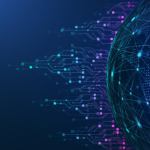2023: The Year of GPT-4 & the AI Arms Race
How groundbreaking AI models reshaped business and technology.
Introduction
Introduction:
If 2022’s buzzword was “ChatGPT,” 2023’s was “GPT-4.” The new year wasted no time delivering the next big thing in AI. Businesses and tech enthusiasts alike waited with bated breath for OpenAI’s next move – and they weren’t disappointed. Picture this: It’s March 14, 2023, and OpenAI announces GPT-4, a model so advanced that it aces exams, understands images, and writes like a pro. The AI world officially hits the fast lane. In this post, we’ll recap 2023’s major AI milestones – from GPT-4’s debut (with turbo-charged upgrades) to the rise of formidable competitors like Anthropic’s Claude and Google’s Bard – turning 2023 into an all-out AI arms race. Buckle up; the pace of innovation was nothing short of Jarvis-level crazy.
GPT-4: Pushing the Boundaries of Intelligence
When GPT-4 launched in March 2023, it set a new gold standard for AI capabilities. OpenAI’s latest model was massive and multimodal – meaning it could accept images as inputs (not just text) and analyze them. This was a huge leap forward from the purely text-based ChatGPT. In one striking example, GPT-4 could look at a photo of ingredients and suggest a recipe – talk about a smart kitchen assistant! Beyond parlor tricks, GPT-4 demonstrated deep reasoning and knowledge, famously scoring in the top 10% on a simulated bar exam (while GPT-3.5 was in the bottom 10%).
It handled academic and professional benchmarks—from biology quizzes to AP exams—with near-human performance. In short, GPT-4 arrived as the most powerful AI model OpenAI had ever released, capable of coherent, context-aware, and accurate responses. For businesses, GPT-4 opened up new possibilities. Early partners integrated it into products: Duolingo built a language tutor, Morgan Stanley experimented with it for wealth management research, and Stripe used it for enhanced coding assistance. OpenAI’s phased rollout – from ChatGPT Plus subscribers and a select API waitlist to general API availability by July 2023 – underscored its cautious yet ambitious deployment.
For more details, check out openai.com.
Enter the Competitors: Claude, Bard, LLaMA & More
The success of ChatGPT and GPT-4 didn’t go unanswered. 2023 saw an explosion of new AI models from various players, each vying for a piece of the emerging market. It felt like an AI renaissance with multiple geniuses emerging at once:
- Anthropic Claude: Founded by ex‑OpenAI researchers, Anthropic introduced Claude as a safer, “more steerable” AI assistant. By March 2023, Claude was trialed as a friendly rival to ChatGPT. But it was Claude 2, launched in July 2023, that truly made waves – handling up to 100,000 tokens in one prompt. Learn more.
- Google Bard & PaLM 2: Reacting to ChatGPT’s early success, Google first launched Bard in early 2023 with their LaMDA model. At Google I/O in May 2023, PaLM 2 was unveiled – powering Bard with enhanced capabilities, from coding to tougher problem-solving. Integrated with Google Workspace, Bard enabled drafting emails in Gmail or summarizing PDFs in Drive. Google also hinted at its next‑gen model, Gemini.
- Meta’s LLaMA & the Open Source Revolution: February 2023 saw Meta release LLaMA 1 for researchers. When its weights leaked online, the open‑source community jumped into high‑gear. By July 2023, Meta’s LLaMA 2 – a fully open‑source 70-billion-parameter model – became available for commercial use, lowering barriers for businesses wary of closed‑source APIs.
- Other Notables: 2023 also witnessed updates from IBM’s Watson, Microsoft’s Bing Chat (powered by GPT‑4), and newcomers like Inflection AI’s Pi. Internationally, China made its mark with Baidu’s ERNIE Bot and an open‑source marvel called DeepSeek‑R1, delivering high performance at a fraction of the cost.
The AI Arms Race & Model Advancements
With so many players in the game, progress accelerated rapidly. Each new model pushed the boundaries further, introducing key advancements:
- Larger Context Windows: GPT-4 started with an 8K token context (with a limited 32K option) while Claude soared to a 100K window. Later, GPT-4 Turbo introduced an impressive 128K context window – enough to digest an entire book or a week’s worth of Slack messages.
- Multimodality: Beyond text, AI models began to see (analyze images) and hear (transcribe or generate audio). Google’s upcoming Gemini is poised to lead this trend.
- Quality & Alignment: Iterative improvements made AI outputs more accurate and better aligned with human intent. For example, Anthropic claimed that Claude 2 was twice as effective at generating harmless, helpful responses.
- Speed & Cost Improvements: Fierce competition drove down costs. GPT-3.5 Turbo dramatically lowered API expenses, and even GPT-4’s pricing began to drop. In November, GPT-4 Turbo emerged – not only more capable but also significantly more cost‑effective.
Business Impact: Adoption Soars
Amid the flurry of launches and upgrades, companies across industries quickly began integrating AI. It wasn’t just about acing exams; it was about tangible business results:
- Enterprise Integration: OpenAI’s ChatGPT Enterprise (mid‑2023) provided enhanced data privacy and security, while Microsoft’s Azure OpenAI Service saw adoption by over 18,000 customers – powering everything from customer service bots to analytics reports.
- Productivity Tools: AI “copilots” became a reality. Microsoft unveiled copilots for Office apps – such as Word, Outlook, and Excel – drastically reducing mundane tasks. A Salesforce survey found that by the end of 2023, 57% of sales teams were experimenting with AI for automation.
- Decision Support & Analytics: ChatGPT’s Code Interpreter (later rebranded as Advanced Data Analysis) enabled users to analyze data, create charts, and derive insights using natural language. AI-powered dashboards quickly became indispensable for real‑time data analysis.
- Creative & Customer Engagement: AI transformed creative processes and customer interactions. From generating ad copy to crafting engaging game dialogues, bespoke chatbots provided empathetic, efficient customer support – boosting satisfaction and conversion rates.
SEO Tie-In: Why This Matters for You
As these breakthroughs dominated headlines, search trends exploded with keywords like “AI consulting,” “AI solutions for business,” and “AI dashboard development.” Companies recognized that expert guidance was essential to navigate this complex landscape – whether choosing between GPT‑4 and an open‑source model, integrating an AI API into legacy systems, or building a custom AI dashboard to track vital metrics.
Conclusion
2023 will be remembered as the year AI matured and moved into the executive suite. Rapid-fire advancements – from doubling context windows to embracing multimodality – translated into transformative business applications.
For those who embraced these technologies early, the rewards have been significant: enhanced productivity, smarter decision-making, and elevated customer engagement. For others, this is a wake-up call – the AI revolution is here, and the time to act is now.
“Imagine having an AI copilot in every department – from finance to marketing – supercharging your workflows and driving unprecedented growth.”
Don’t let 2023’s breakthroughs pass you by. Whether you’re intrigued by GPT-4’s capabilities, considering a private Claude model, or eager to build a tailored dashboard that delivers real‑time insights, our team is here to help. We’re dedicated to guiding you through the evolving AI landscape so you can harness these advancements to achieve your business goals.
Now is the time to start your AI journey – reach out for custom AI solutions that align with your vision and propel your organization into the future.
Up next in our AI milestone series: 2024 arrives with multimodal magic and unprecedented investments – think AI that can see and talk, with companies pouring billions into AI infrastructure. Stay tuned!





